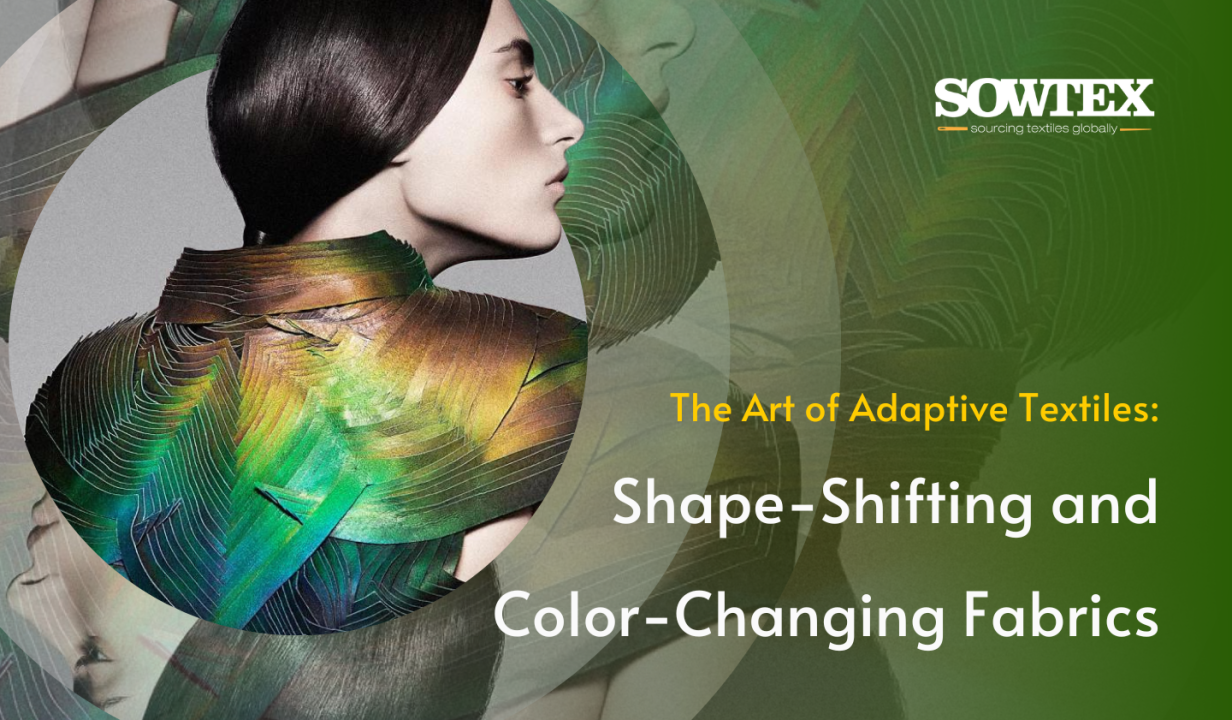The Art of Adaptive Textiles: Shape-Shifting and Color-Changing Fabrics
Adaptive textiles, widely recognized as smart textiles crafted from intelligent fabric, are designed to respond and adapt to changes in their environment. Their inception and development were primarily rooted in the fitness industry, driven by significant demand. Globally, companies have been leveraging existing data to measure and identify core challenges faced by athletes and individuals with high per capita displacement. This article delves into the penetration of innovation and disruption within the textile industry, revolutionizing even clothing to dynamically adjust to real-time changes.
Types and Technology Behind Adaptive Textiles
Thermochromatic and Photochromatic Textiles:
Textiles of this nature change their color in response to temperature fluctuations. They offer a dynamic and aesthetic touch to outfits, finding significant application in marine research to signal sudden temperature changes underwater. In contrast, photochromatic textiles react to light, particularly UV rays. These textiles are favored in fashion, design, art-based events, and performances. Manufacturing thermo and photochromatic textiles involves intricate technological intervention. Thermochromic pigments undergo specific molecular rearrangement in response to light, resulting in color change. Encapsulation of thermochromic pigments on a micro-level occurs when mixed with a polymer matrix.
Hydrochromic and Hydro-responsive Textiles:
These textiles undergo complete pattern and color transformations when exposed to water or moisture fluctuations. They serve as swimwear or indicators of humidity changes. Maintaining high sensitivity and effectiveness is a fundamental challenge for manufacturers. Hydrochromic compounds become transparent when in contact with water, revealing the fabric beneath. This change stems from an alteration in the embedded compound’s refractive index. On a chemical level, hydrochromic compounds are coated onto textiles, interacting with absorbed moisture to fundamentally alter their optical properties, leading to changes in color or transparency.
Shape Memory Textiles:
Textiles of this kind can change shape when subjected to specific stimuli, such as heat. Unlike thermochromatic textiles, these textiles are designed to conform to the body’s shape when exposed to heat. They are used for both functional purposes and to create an aesthetically pleasing appearance. Shape-memory textiles are usually constructed from alloys or polymers with shape-memory characteristics. These materials inherently “remember” a predefined shape, returning to it when specific stimuli are applied. A common alloy used in this context is Nitinol. These textiles exhibit reversible phase transitions.
Electroluminescent Textiles:
This category of adaptive textiles incorporates light-emitting elements that can be turned off. They find diverse applications, including illuminated clothing and signage. Typically, phosphors or other organic compounds are used. These elements emit light upon being excited by electrons generated by electric waves. The manufacturing process involves selecting a textile substrate, cleaning and treating it to ensure proper adhesion of the conductive layer, which serves as electrodes supplying electricity to the electroluminescent layer. The conductive layer can be either screen-printed or sprayed onto the substrate.
Conductive Textiles:
Conductive textiles feature fibers and/or coatings that enable them to conduct electricity. They are commonly used in wearable technology, allowing sensors, LEDs, and other electronic components to be integrated directly into the fabric. These textiles facilitate the movement of electrons along their pathways. Conductive material can be sprayed, printed, or woven directly into the textile. Typically, materials like steel or silver-coated nylon are used to build conductive textiles. Conductive threads, created by spinning conductive materials around base textiles or non-conductive cores, are then stitched using traditional sewing methods, empowering end-users to establish custom conductive pathways.
Pressure-Sensitive Textiles:
Adaptive textiles in this category alter their properties in response to external pressure. These textiles find direct applications in healthcare, sensing pressure, and the sports industry for analyzing movement and form. Footwear, compression garments, and various types of jerseys are gradually adopting this type of adaptive textile to provide customized and efficient comfort. Materials such as conductive polymers or piezoelectric fibers are typically introduced into these textiles. In response to increased pressure, these materials experience changes in conductivity or generate electrical signals, which can be tracked to determine pressure levels. Designers can utilize this technology to create high-performance sportswear and extract insights from data to determine which muscles are engaged during specific sports.
At the core of Adaptive Textiles lies the intention to create an intuitive clothing experience. Designers and end customers across the globe seek textiles that are not only aesthetically pleasing but also effectively responsive to real-time needs and changes, while remaining cost-effective.
Sowtex is taking the initiative to invite fabric manufacturers involved in innovative technologies for commercial production to come and showcase in the upcoming Textile Sourcing Meet'23 -JAIPUR, an 8th Edition Buyer Seller Meet focussing on Textile Innovation and Sourcing.


Comments
Post a Comment